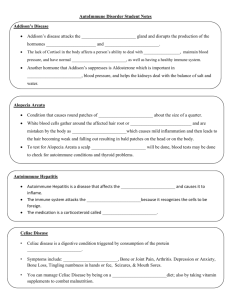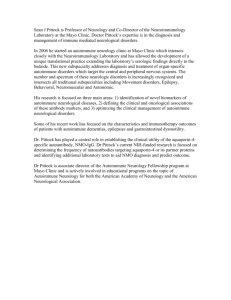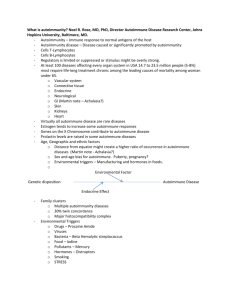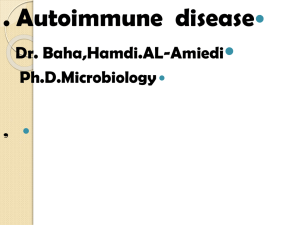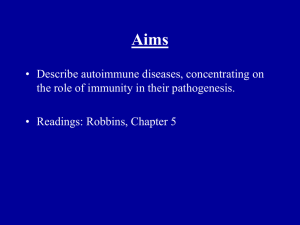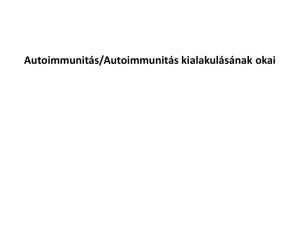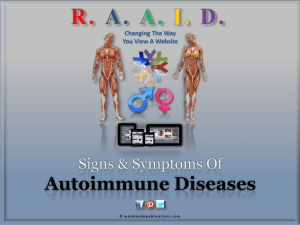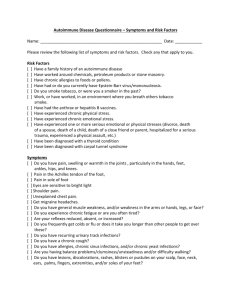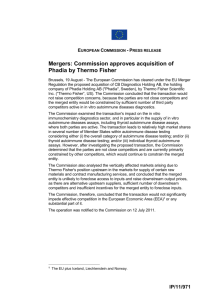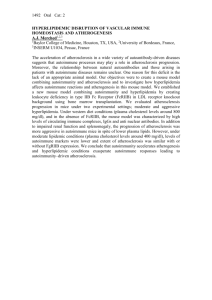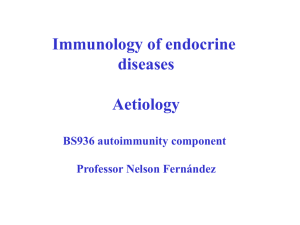Introduction - British Renal Society
advertisement
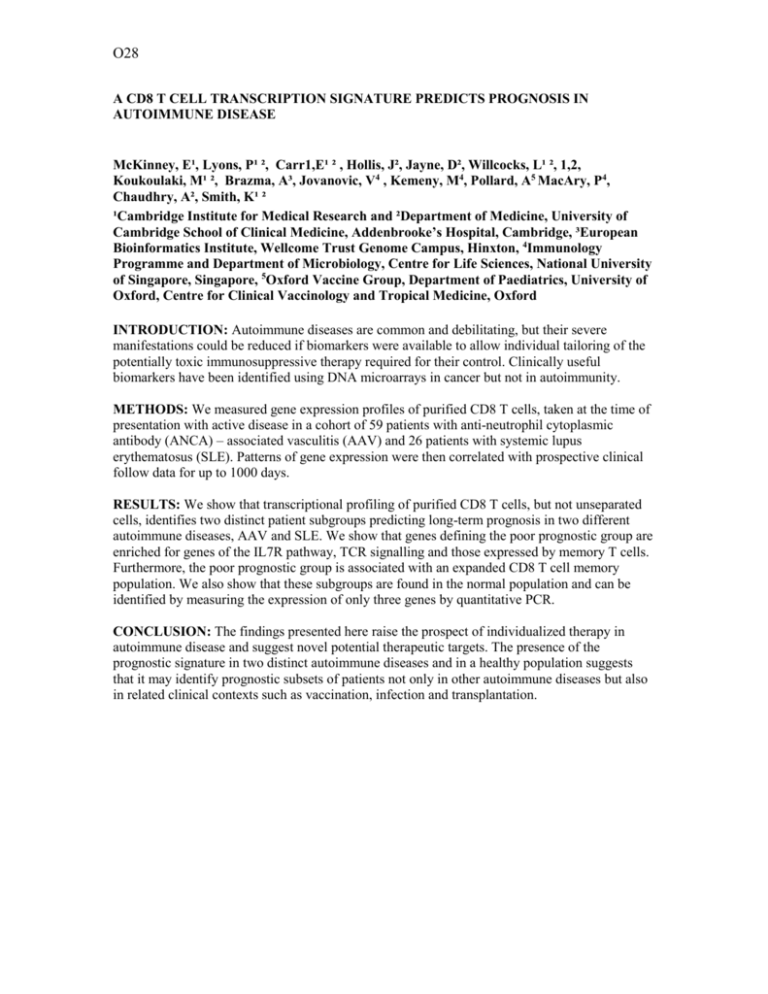
O28 A CD8 T CELL TRANSCRIPTION SIGNATURE PREDICTS PROGNOSIS IN AUTOIMMUNE DISEASE McKinney, E¹, Lyons, P¹ ², Carr1,E¹ ² , Hollis, J², Jayne, D², Willcocks, L¹ ², 1,2, Koukoulaki, M¹ ², Brazma, A³, Jovanovic, V4 , Kemeny, M4, Pollard, A5 MacAry, P4, Chaudhry, A², Smith, K¹ ² ¹Cambridge Institute for Medical Research and ²Department of Medicine, University of Cambridge School of Clinical Medicine, Addenbrooke’s Hospital, Cambridge, ³European Bioinformatics Institute, Wellcome Trust Genome Campus, Hinxton, 4Immunology Programme and Department of Microbiology, Centre for Life Sciences, National University of Singapore, Singapore, 5Oxford Vaccine Group, Department of Paediatrics, University of Oxford, Centre for Clinical Vaccinology and Tropical Medicine, Oxford INTRODUCTION: Autoimmune diseases are common and debilitating, but their severe manifestations could be reduced if biomarkers were available to allow individual tailoring of the potentially toxic immunosuppressive therapy required for their control. Clinically useful biomarkers have been identified using DNA microarrays in cancer but not in autoimmunity. METHODS: We measured gene expression profiles of purified CD8 T cells, taken at the time of presentation with active disease in a cohort of 59 patients with anti-neutrophil cytoplasmic antibody (ANCA) – associated vasculitis (AAV) and 26 patients with systemic lupus erythematosus (SLE). Patterns of gene expression were then correlated with prospective clinical follow data for up to 1000 days. RESULTS: We show that transcriptional profiling of purified CD8 T cells, but not unseparated cells, identifies two distinct patient subgroups predicting long-term prognosis in two different autoimmune diseases, AAV and SLE. We show that genes defining the poor prognostic group are enriched for genes of the IL7R pathway, TCR signalling and those expressed by memory T cells. Furthermore, the poor prognostic group is associated with an expanded CD8 T cell memory population. We also show that these subgroups are found in the normal population and can be identified by measuring the expression of only three genes by quantitative PCR. CONCLUSION: The findings presented here raise the prospect of individualized therapy in autoimmune disease and suggest novel potential therapeutic targets. The presence of the prognostic signature in two distinct autoimmune diseases and in a healthy population suggests that it may identify prognostic subsets of patients not only in other autoimmune diseases but also in related clinical contexts such as vaccination, infection and transplantation.
